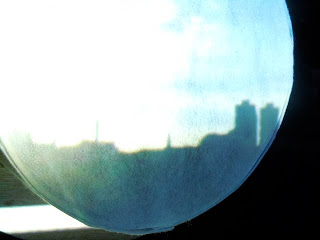
"Somebody has told me it's summer solstice"
"Yes, I'm investigating whether the sun is really standing still"
"Continue..."
"I need you to stand still for just one minute. Film the landscape to frame the sun's position in the sky against the horizon. The card you pick will reveal the hour you are entrusted to observe."
"How?"
"With a digital camera. Prompt action is called for, you have until midnight to upload your film. I will have 4 hours from UK midnight/ 9 pm BR to edit the films into a sequence to be projected on Monday 21st at 17:17 here in Rio"

The result was 14 x 1" minute films sent on Sunday 20th June by midnight in London and the films are edited together by midnight in Rio on the same night. On Monday 21st June at 17:17 pm (BR) an event takes place in Alto São Conrado, in the community where this trans-atlantic experiement took place. A looking glass was built especially for this performance where the 14 minutes on sun-light of Britain's longest day were transported to Rio and projected into it, in a sequence as twilight commenced in Rio on our shortest day of the year in the southern hemisphere.
A very special thanks goes to Lottie Leedham and Neil Callaghan for their support from London. Maiza Almeida, Moana Mayall, Sirkuu Maenpaa and Tee Cardarci for their assistance in editing, sourcing and building the looking glass to support the performance in Rio and a huge thank you the distance festival public whose films from the UK made this work possible; Laura Bradshaw, Rachel Jacobs, Willian Villalobos Fernandez, Catherine McKenna, Lucy Moore, George Morris, Elisabeth Morris, Ink & Ale, Wason Murray, Greg McLaren and Simone Kenyon.









